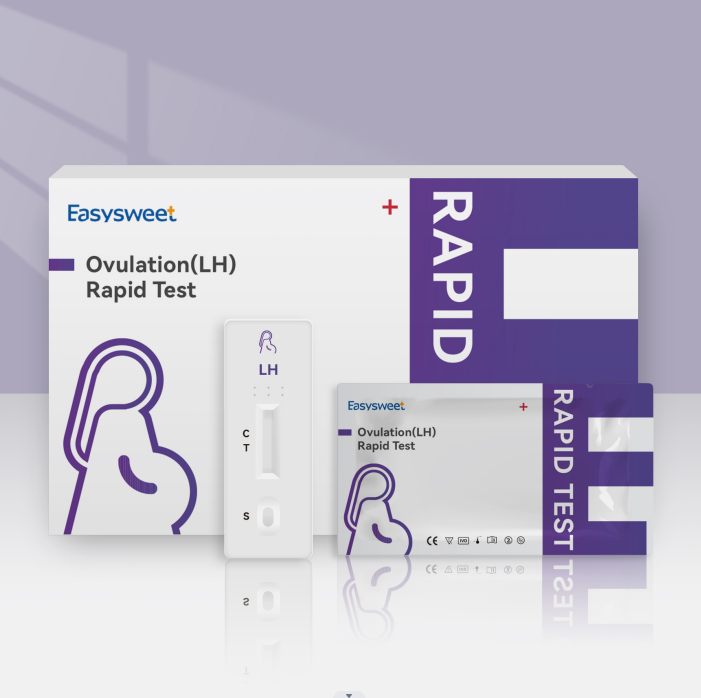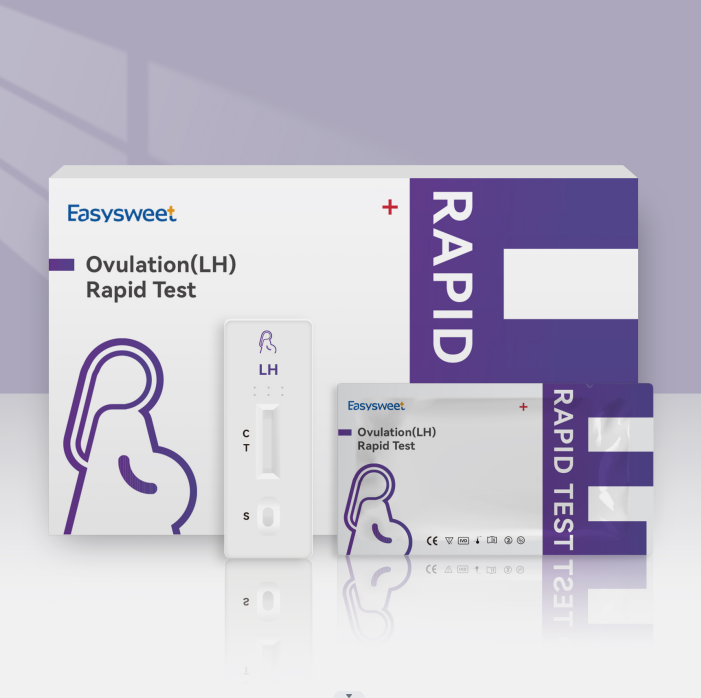Once you have a positive Easysweet Ovulation test, you probably know what to do next - start "trying!" But you may still be wondering what your chances of actually getting pregnant after a positive ovulation test are. Read on to find out!

What are Easysweet Ovulation tests and why should I use them?
Ovulation tests (also known as ovulation predictor kits or OPKs) are urine-based home hormone tests that can be used to monitor your cycle. They measure the level of LH (luteinizing hormone) in the urine to predict when ovulation will occur.
During the follicular phase—or the first half of the cycle—growing follicles mature and start producing estrogen. When your estrogen reaches a certain level, it signals your pituitary gland that follicles are mature and your body is ready to ovulate.
The pituitary gland then releases a flood of LH, which triggers the follicle to release an egg, leading to ovulation.
If you are trying to conceive, you will need to use the Easysweet Ovulation test to predict the time of ovulation and the correct time for intercourse. After all, an egg only lives for 12-24 hours after release, while sperm can fertilize it in a very short time. This is called your fertile window, and it's the only time of each cycle when conception is possible.
Fortunately, sperm can survive in a woman's reproductive tract for up to 5 days, which means having intercourse before ovulation ensures that sperm are waiting after the egg is released. Using an ovulation test can help you schedule intercourse before ovulation to increase your chances of conceiving.
Disadvantages of the Easysweet Ovulation test include:
They are not always reliable for women with PCOS who have high LH levels throughout the cycle.
They are less reliable for women with irregular cycles, who may have several surges during the cycle.
They are slightly more expensive than cervical mucus monitoring.
On the other hand, advantages include:
They are easy to use.
They are non-invasive, which means they can be used for several days, or even twice a day.
They actually show hormonal changes in your body, while ovulation calculators only make estimates based on previous data.
Predict and Confirm Ovulation
When should I use Easysweet Ovulation test?
If you know your cycles are regular and you ovulate more or less on the same cycle day each cycle, you can start using an ovulation test about 5-6 days before your next suspected ovulation date. If your cycle is irregular or this is your first monthly test, you may want to start as soon as your period ends.
Starting the test early in your cycle ensures you don't miss the LH surge because we don't always ovulate on day 14 of the cycle, no matter what fertility myths tell us. In fact, a woman's cycle can last anywhere from 21 to 35 days and still be considered "normal." Your ovulation date will vary depending on the length of your cycle.
Some women may ovulate on cycle day 8, while others may ovulate on cycle day 20, so it is important to track and detect your fertile window to increase your chances of conceiving!
LH levels typically spike in the blood between midnight and 8 am, which means they may not be visible in the first morning urine. Therefore, it is best to test your next morning urine after holding it for at least 2-3 hours. You can take the test with the at noon or in the afternoon according to your preference.
If by any chance you can't catch the surge, don't worry! Some women may have very short tides, which may only last a few hours. In this case, you can test twice a day, at noon and in the evening, to make sure you don't miss out.
Depending on the type of ovulation test you use, an ovulation test is usually considered positive when two identical lines or a solid smiley face appear.
Chances of getting pregnant after a positive Easysweet Ovulation test
Depending on the type of ovulation test you use, an ovulation test is usually considered positive when two identical lines or smiley faces appear.
What does a positive Easysweet Ovulation test mean?
A positive ovulation test means your LH levels are skyrocketing, and you should expect ovulation to occur anytime within the next 12 to 36 hours. This marks the opening of your fertile window - when intercourse is most likely to result in conception.
That means it's time to "try"! While many people think you should have intercourse every day of your fertile period, we know you might not always be in the mood. That's okay, though; studies show that having sex every day during your fertile period doesn't increase your chances of conceiving by much compared to having sex every other day.
What are my chances of getting pregnant after a positive Easysweet Ovulation test?
After getting a positive ovulation test and having timed intercourse, you may be wondering what your chances of conceiving are.
Research shows that your chances of getting pregnant are highest when you start having intercourse 5 days before and on the day you ovulate. This means that when you start having sex a few days before a positive ovulation test is actually the perfect time for you to conceive!
Here are some specific date-specific odds of pregnancy based on the date you had sex:
3 days before ovulation: 27%
2 days before ovulation: 33%
1 day before ovulation: 41%
Ovulation day: 20%
1 day after ovulation: 8%
As you can see, your chances of getting pregnant increase as you get closer to ovulation, then decrease significantly on the day of ovulation and beyond. That's why it's so important to track your cycle regularly to predict your fertile window!
Some of the content of the article comes from the Internet, if there is infringement, please contact us.


